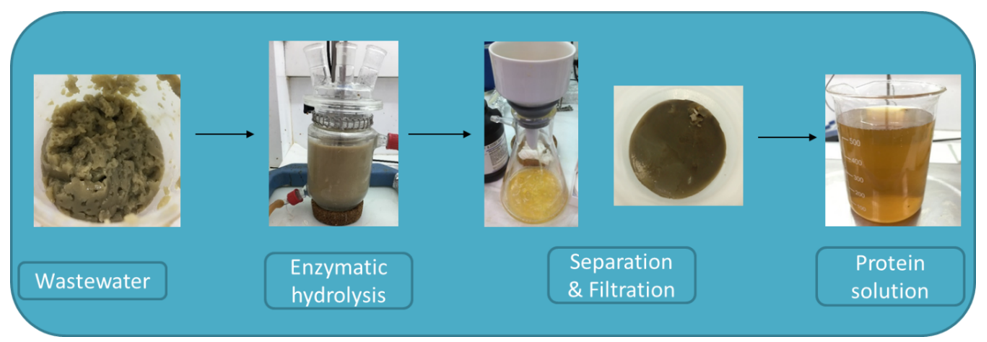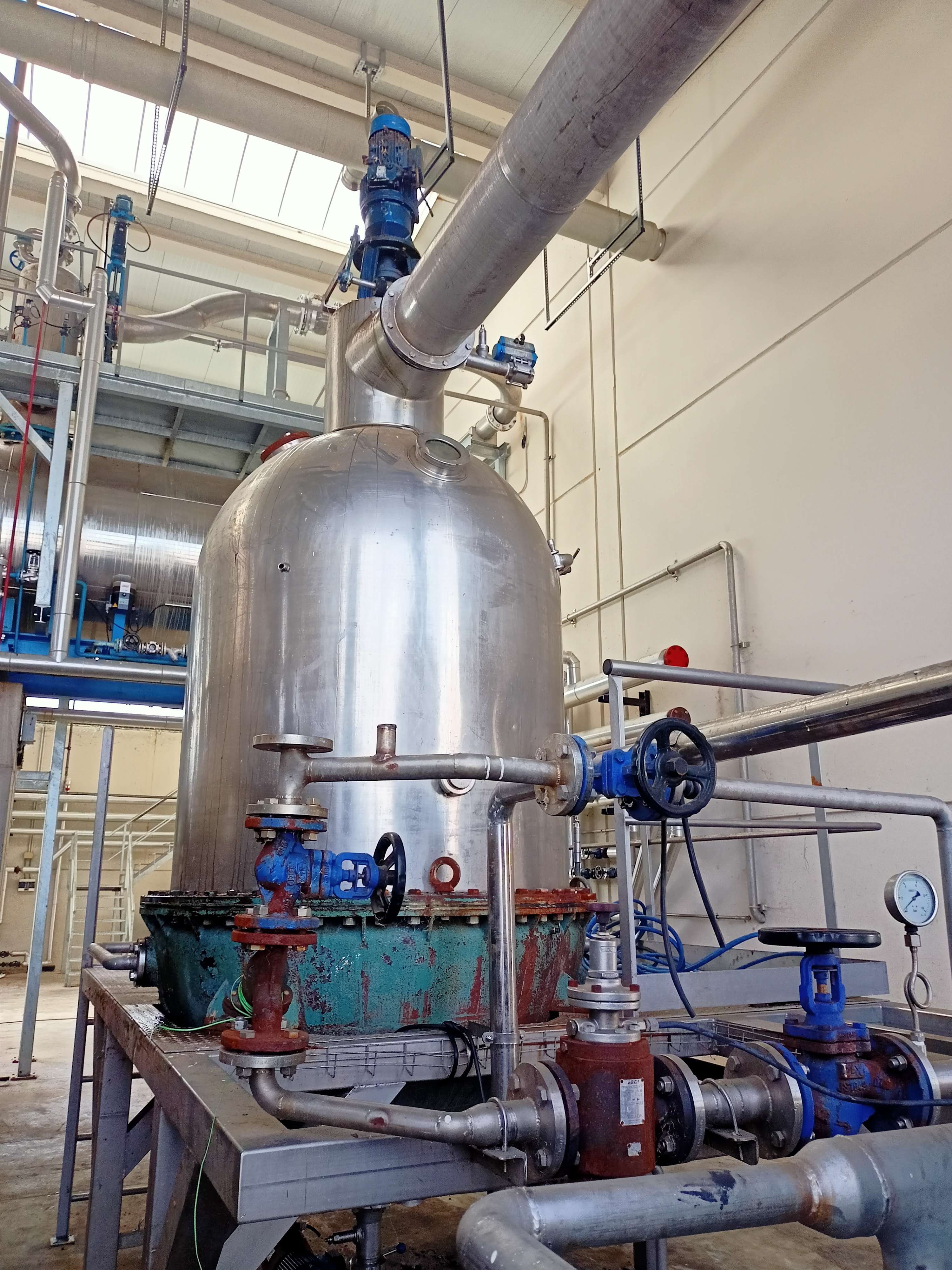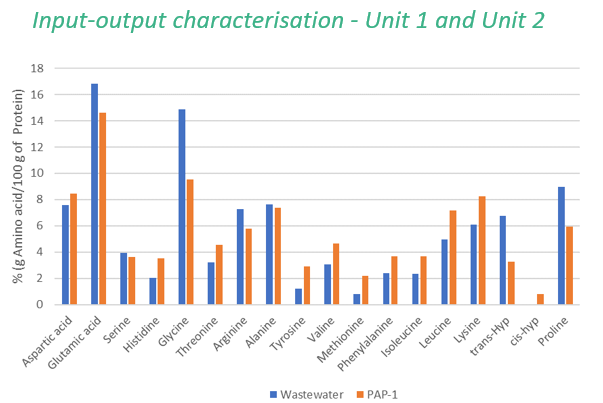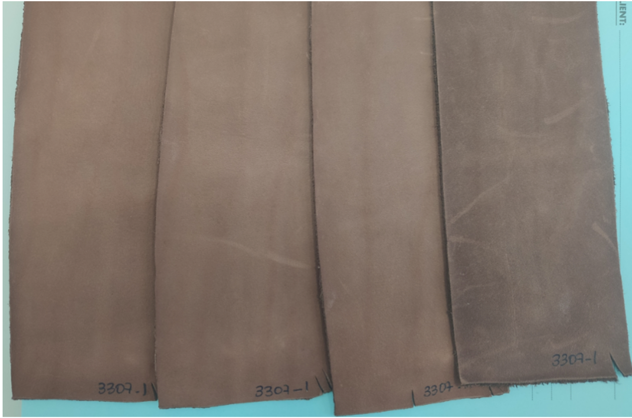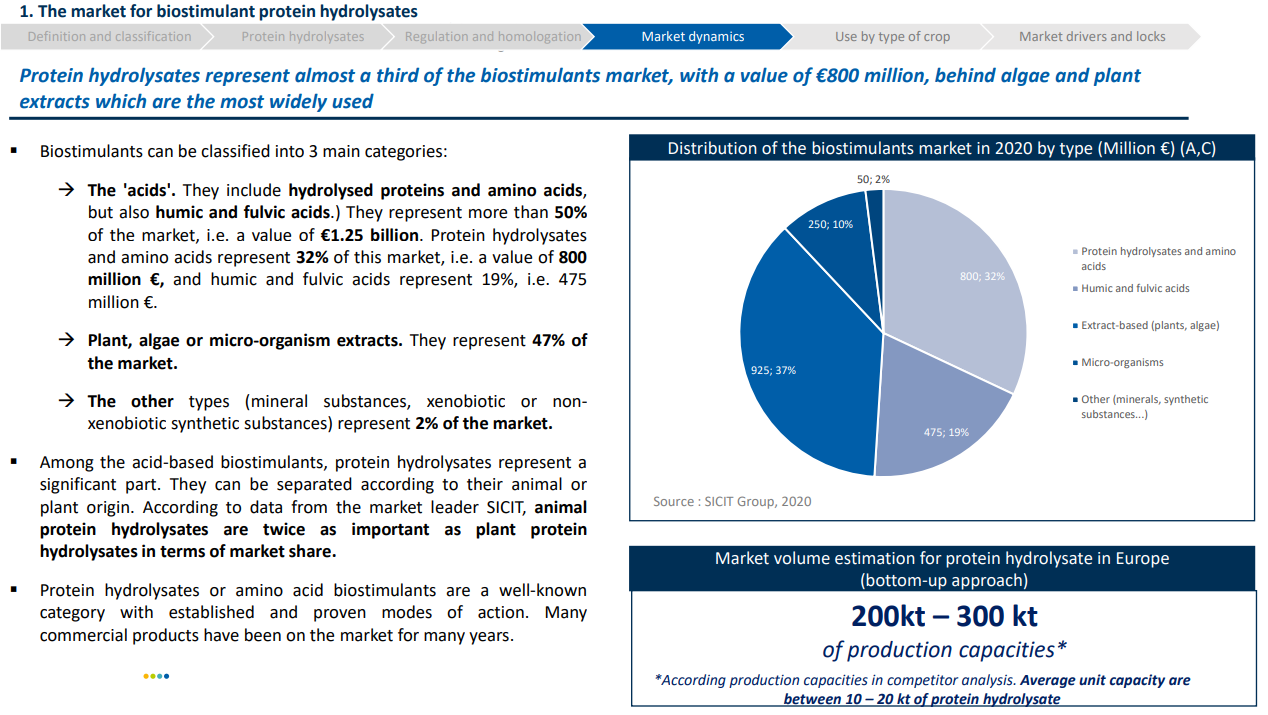A.1 Defined Processes ✅
An enzymatic process is proposed for the extraction of collagen-based products from category 2 greaves and wastewater. This process has shown to be suitable for the treatment of non-tanned hides and skins and for PAPs. For this is needed following preparatory actions:
![]() A1.1 selection of conditions for the extraction of collagen based products from greaves
A1.1 selection of conditions for the extraction of collagen based products from greaves
The proposed process consists of the following stages:
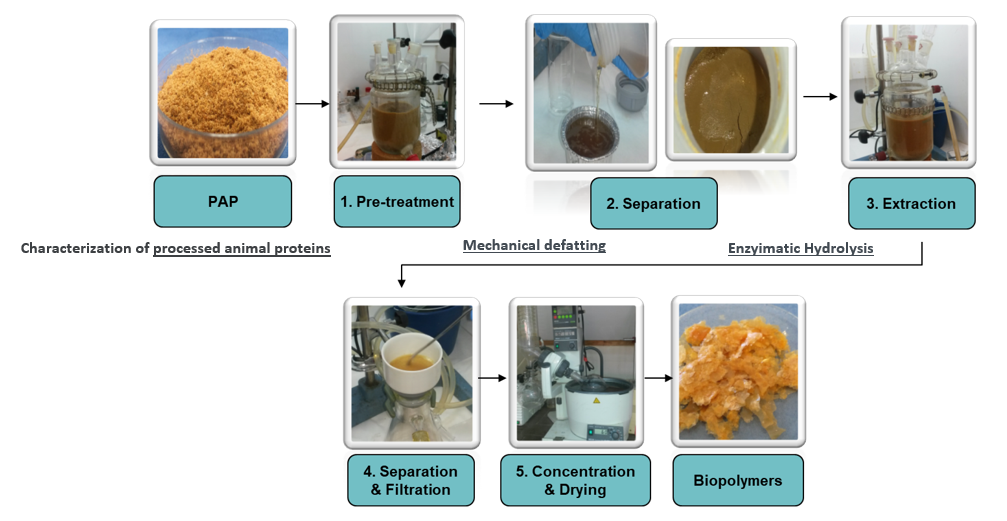
Find out the defined processes in detail of LIFE Byprotval project
![]() A1.2 Selection of the technologies for the extraction of collagen based produts from processing water.
A1.2 Selection of the technologies for the extraction of collagen based produts from processing water.
The proposed process consists of the following stages:
